Do you still need to buy pizza outside? Follow the chef to make it golden, crispy and stretchy
Pizza is a delicious delicacy. Originating in Naples, Italy, it has become the second most popular fast food after hamburgers. Its defining feature is its diverse toppings, which allow it to be stretched. Pizza is made by topping ingredients onto a dough base, then topping it with cheese and baking it. The pizza base is actually more like a plate, with ingredients added to it according to personal taste. This allows for great flexibility and innovation in pizza making, which is why it's so popular. There are two main types of pizza today: Italian and American, distinguished primarily by their crusts. Italian pizza has a thin crust, while American pizza has a thicker one. American pizza itself evolved from Italian pizza, having been brought to the United States by Italians in the late 19th century, where it evolved into the American style. Pizza toppings can be either meat or vegetarian. Meat toppings typically include poultry, meats, various sausages, fish, and seafood. Vegetarian toppings typically include vegetables, mushrooms, and fruit. Pizza seasonings typically include onions, cheese, herb, basil, and tomato sauce. These ingredients and seasonings are used in original pizza. Pizza can also be made into curry flavor or spicy flavor.
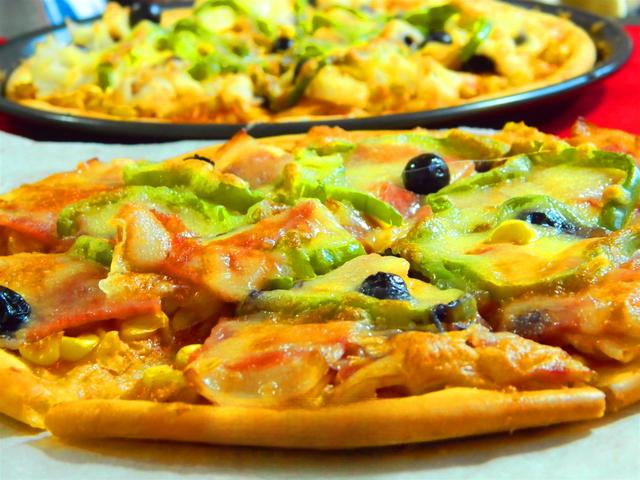
To make pizza delicious, it must be freshly made and eaten. This ensures a crispy crust and the best taste and texture. Everyone knows that packaged pizza loses its flavor and texture when heated. Because pizza crusts and toppings have a very low water content, heating the crust causes it to lose more water and become tougher. Toppings are fried before making, so reheating them is like eating leftovers. Everyone knows that leftovers never taste as good as freshly fried dishes. This serves as a reminder to everyone, whether ordering pizza from a restaurant or making it at home, to manage portions. Let me share with you how large a pizza is sufficient for several people. A 9-inch pizza can comfortably feed a man 1.5 pizzas. A larger eater can easily eat 2.5. Women generally only need one pizza, or two women with smaller appetites. Pizza contains cheese, which is high in calories, so those seeking weight loss should exercise caution when eating. Pizza is a combination of food and drink. The base of the pizza can be used as the main dish, and the fillings on top are the dishes. It can be eaten with appropriate soup or juice.
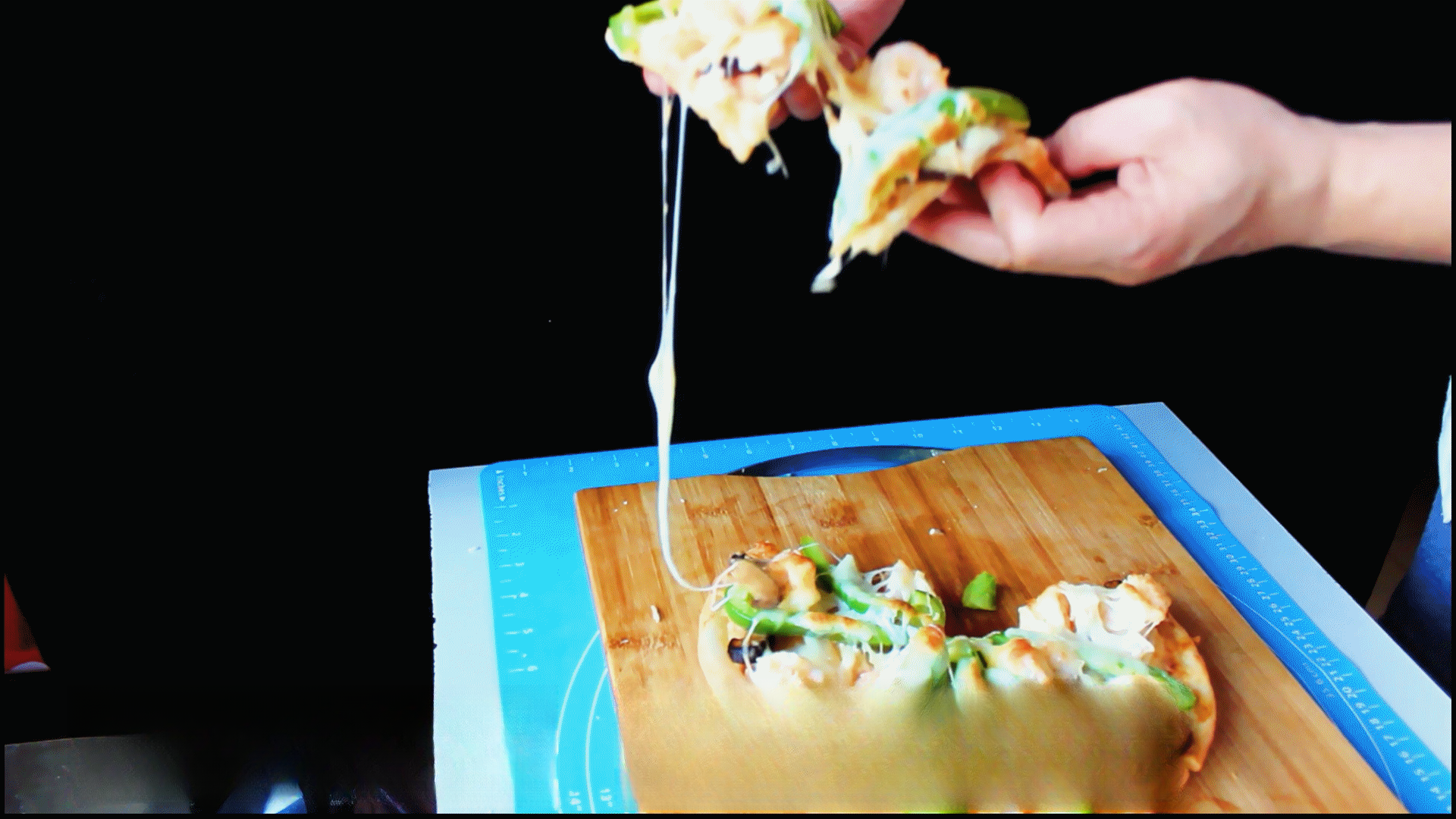
When making pizza at home, it's crucial to choose high-quality ingredients to ensure an authentic pizza flavor. The ingredients must be fresh. For meat-based pizzas, choose fresh meat, not frozen. For vegetarian pizzas, choose fresh, tender vegetables, not overcooked ones. For fruit pizzas, choose fully ripe fruit, not hard ones. This is different from meat and vegetable pizzas. Raw fruit has little sugar, which releases a lot of acid when heated, resulting in a sour, less palatable pizza. Ripe fruit has a higher sugar content and a stronger flavor, making it a more flavorful pizza. Western pastries typically use fully ripe fruit. For example, banana cakes are made with very soft, ripe bananas to ensure the cake has a true banana flavor. Using freshly harvested bananas will not only result in a bland banana flavor, but also a harsh texture. The most important ingredient in pizzas is cheese; always choose mozzarella. This creates a stringy texture. As for pizza herbs and basil leaves, if you don’t have them at home, you can choose ready-made pizza sauce so you don’t have to buy tomato sauce separately.
===Homemade Pizza===
[Crust recipe]: 175 grams of low-gluten flour, 175 grams of high-gluten flour, 10 grams of yeast, 8 grams of salt, 8 grams of sugar, and 210 grams of water.
【Filling ingredients】: green pepper, ham, bacon, onion, mushroom, shrimp, tomato sauce, mozzarella cheese.
[Preparation method]: 1. Stir the yeast and water together until the yeast is completely dissolved and there are no yeast particles.
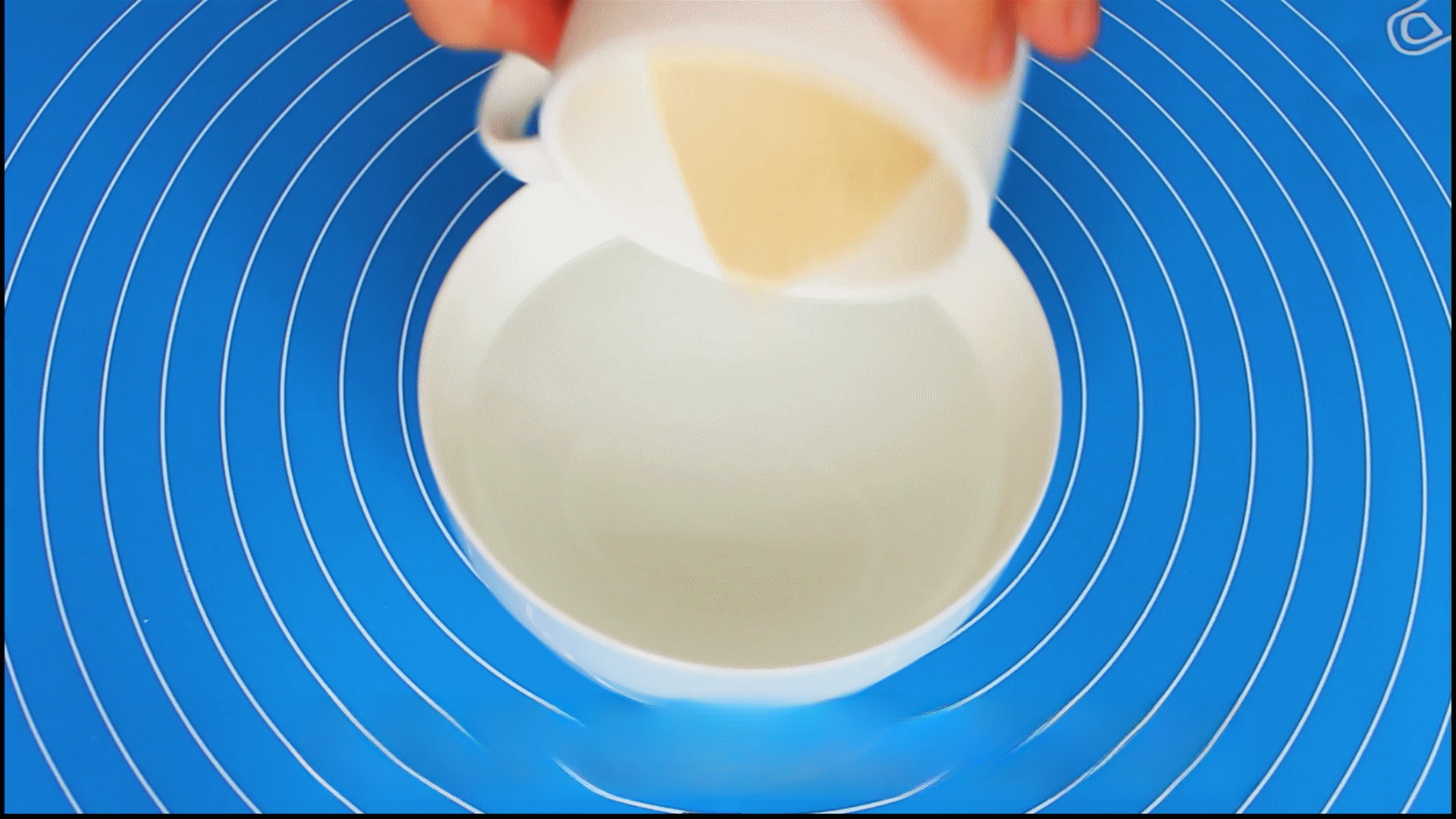
2. Add sugar and salt to the flour and mix well. Make a small well after mixing well.
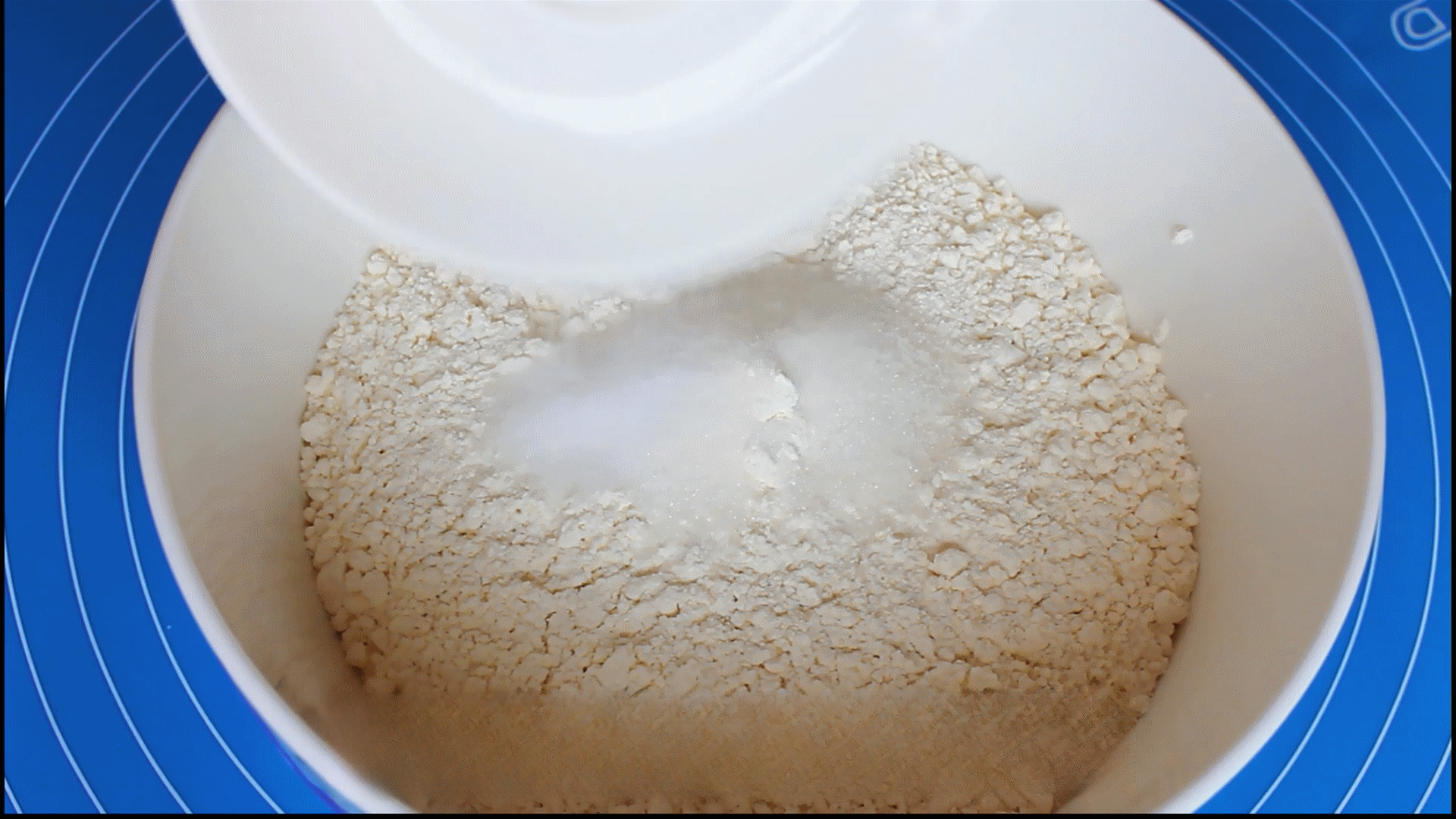
3. Add yeast water into the small pit.
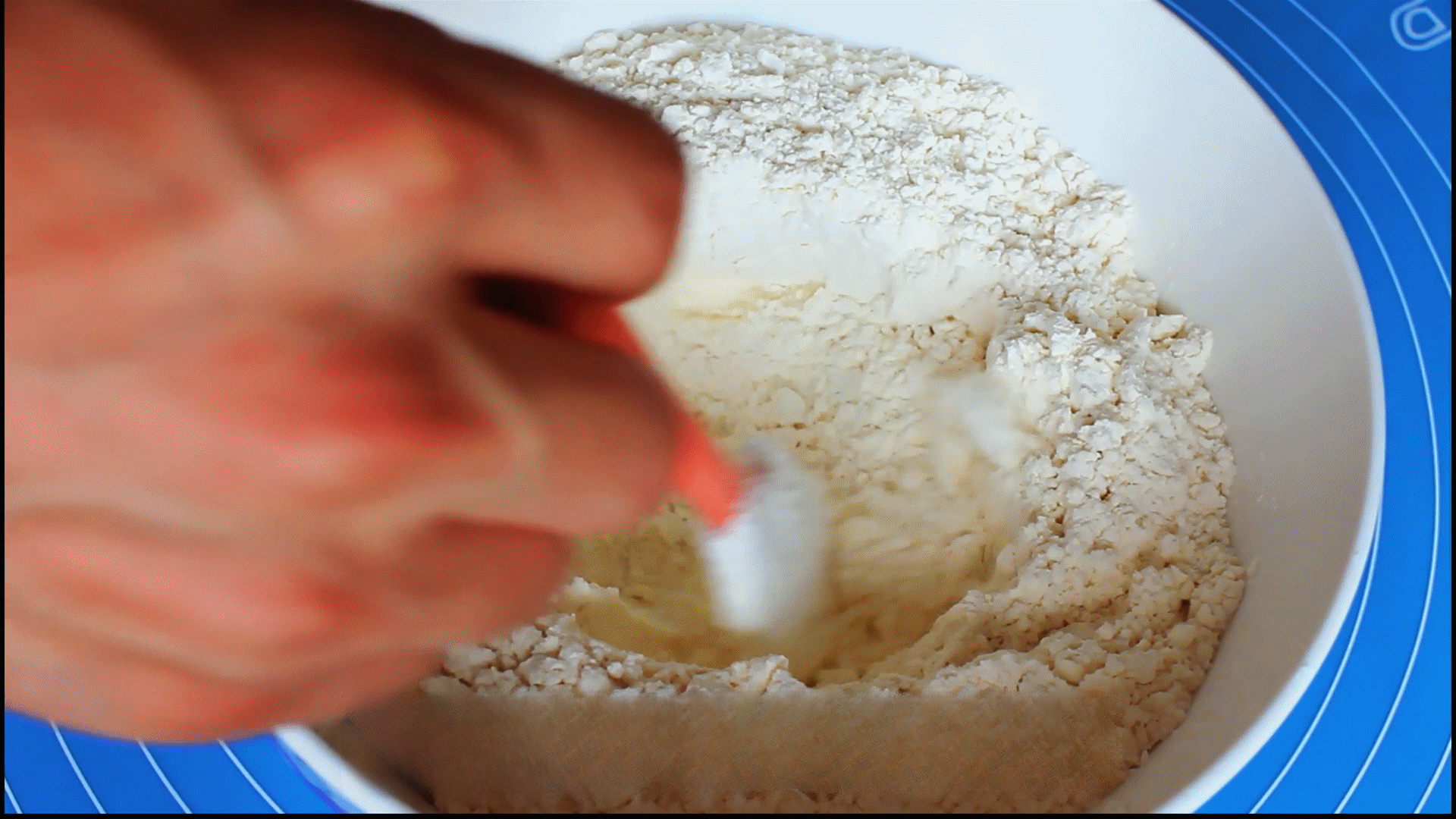
4. Knead the flour and yeast water into dough.

5. Add butter and knead until the dough and butter are completely blended and the surface is smooth.

6. Roll the dough into a thin sheet, put it in a fresh-keeping bag, and refrigerate for 20 minutes. This step is to cool the dough as quickly as possible.
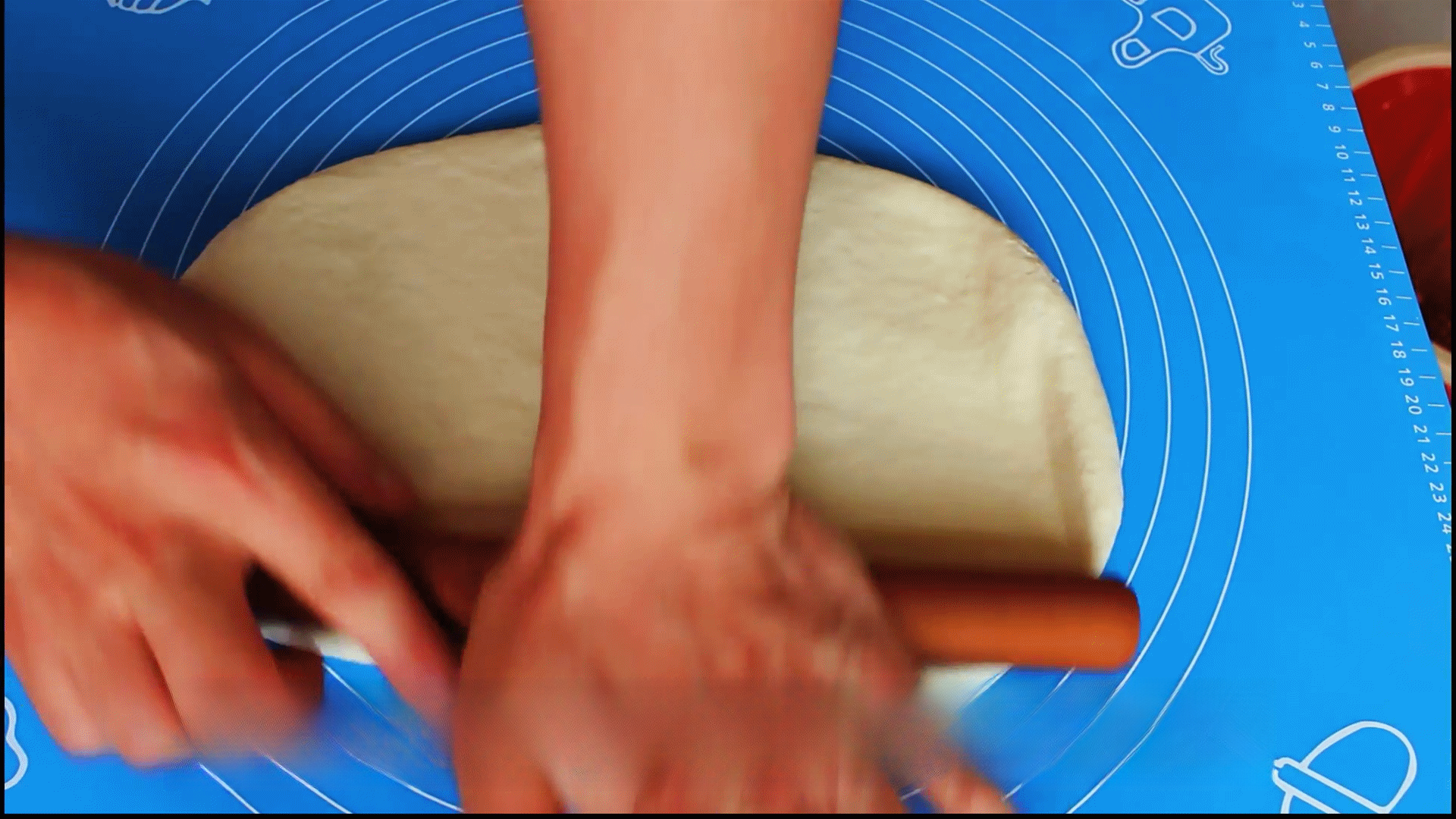
7. Take out the cooled dough, first fold it into small doughs repeatedly with your hands, roll it into thin slices again, put it in a fresh-keeping bag and freeze it for 15 minutes.

8. Take out the dough and use your hands to pull the edge of the dough into a uniform film.

9. After rolling the dough into a ball, divide it into four equal small portions. The above recipe is just enough to make four 9-inch thin-bottom pizza bases.

10. Roll the small dough into a ball and let it relax for 10 minutes. Cover it with a wet towel to prevent the surface of the dough from drying out.

11. Roll the relaxed dough into a thin slice that is slightly larger than the pizza pan.

12. Place the rolled-out dough on a pizza pan and prick it evenly with a fork. This will prevent it from bulging during baking. Cover with a damp towel and let it rise for about 10 minutes before baking it in the oven for the first time. Bake at 200°C (160°C) on the top and 160°C (200°C) on the bottom for about 5 minutes, until the surface of the pizza crust is slightly set. Let the crust cool.

13. Spread tomato sauce or pizza sauce on the baked crust.

14. Spread the tomato sauce evenly, only on the bottom of the pancake and avoid spreading it on the edges.

15. Among the prepared ingredients, those with high water content should be stir-fried first. Onions and mushrooms should be stir-fried in advance, and appropriate amount of pizza sauce should be added to stir-fry until soft. When stir-frying, mushrooms should be stir-fried first and then onions. Stir-fry mushrooms until the surface is golden brown and then add onions and stir-fry until soft.

16. Grate the mozzarella cheese, starting with a thin layer. Spread the cheese evenly.

17. Place the thinly sliced sausages on the plate. I also made bacon and shrimp flavors. The process is the same, except that the shrimps need to be blanched first.

18. Add the fried onions and mushrooms. Don’t put too many ingredients as it will affect the drawing effect.

19. Add the chopped green pepper strips, making sure they are facing the same direction, so that the pizza will look beautiful after baking.

20. Finally, apply a layer of shredded cheese on top, using a little more than the first time. Cover all the ingredients. Preheat the oven to 200 degrees Celsius and bake the pizza for 15-18 minutes.

21. Bake until the surface is golden brown. Remove the pizza from the oven while it is still hot and place it on the chopping board.

22. Cut the pizza into 6-8 small pieces while it's still hot. Your delicious homemade pizza is ready.

Tips: 1. Why do we bake the pizza crust twice? Homemade pizza requires baking the crust twice. The first baking is to set the crust. The upper oven temperature should be significantly higher than the lower oven temperature. This prevents the crust from losing too much moisture during baking and allows the crust to set quickly. Setting the crust creates a protective film that prevents the crust from soaking into the juices of the ingredients, preventing it from becoming too hard and crispy, which can affect the taste.
2. Why do we freeze pizza crusts? Hand-kneaded dough heats up quickly, so we freeze it to cool it down quickly. This is done in the summer; in the cooler winter, refrigerating for 20-30 minutes is sufficient. Refrigerating not only cools the dough but also relaxes it, making it easier to roll out. The preparation for pizza crusts is generally the same as for bread.
3. Why doesn't pizza crust need to rise for 40-60 minutes? The second point is that the method is basically the same as bread, but the fermentation time doesn't need to be too long. First, the yeast content in the recipe is much higher than that of bread, so it can't be fermented for too long. Second, too long a fermentation time will affect the crispness of the crust. If the crust is too soft, it will not taste crispy. Finally, pizza crust is different from bread. It needs to be topped with vegetables and cheese, so if it is fermented too soft, it will still be flattened. Therefore, our crust only needs to rise slightly.
4. Why do we poke small holes in the pizza crust with a fork? Because when the pizza crust is baked, there's no air circulation between the dough and the mold. The heat creates gases that can't escape easily. If these gases can't escape quickly, the crust will bulge, affecting the appearance and reducing the amount of filling you can put in. Therefore, poke small holes in the crust to allow for quick escape of gases and maintain the integrity of the crust.
5. Why do you need to sprinkle cheese twice? Is it not enough to sprinkle it once? You can sprinkle cheese once, but you need to use more than twice to achieve the stringy effect. Sprinkling cheese twice uses cheese to wrap the vegetables and meat. Because the cheese melts as it heats, a layer of cheese paste forms on the crust. The cheese on top will flow down and combine with the cheese on the bottom, making the stringy effect better and easier.

[Homemade Pizza Summary]: ①. Making the pizza base is crucial. Mastering the following aspects will ensure a crispy pizza base. First, mix the yeast and water thoroughly so that the base will ferment more evenly and avoid any dead dough. Second, control the temperature of the dough. Rapidly cooling it in the refrigerator can slow the yeast fermentation, allowing us to begin fermenting after the base is formed. Third, a uniform film will make the base a whole. After fermentation, it will ensure that the thickness is even throughout the base, eliminating any unevenness. Finally, poke small holes in the base to maintain the integrity of the base, making it as smooth as a plate.
②. Vegetables high in water content must be stir-fried before use in pizza. Our crust is already thin, and excessive water content in vegetables will soften it. Fermented flour absorbs water significantly more readily. For example, pancakes and steamed bread absorb more liquid. It's obvious that steamed bread, due to its fermented, sponge-like texture, is more absorbent. Similarly, avoid using fruits high in water content when making fruit pizza.
③. Mozzarella is essential for pizza. There are three common cheese types: cream cheese (used in cakes), cheddar cheese slices (used in hamburgers), and mozzarella (used in pizza). The first two types are not shredded. Any mozzarella cheese, whether in block or ready-made shreds, can be used. If using ready-made shredded cheese, sprinkle the shorter, more shredded cheese on the base of the pizza and the longer, more complete shreds on top to make it easier to shred.